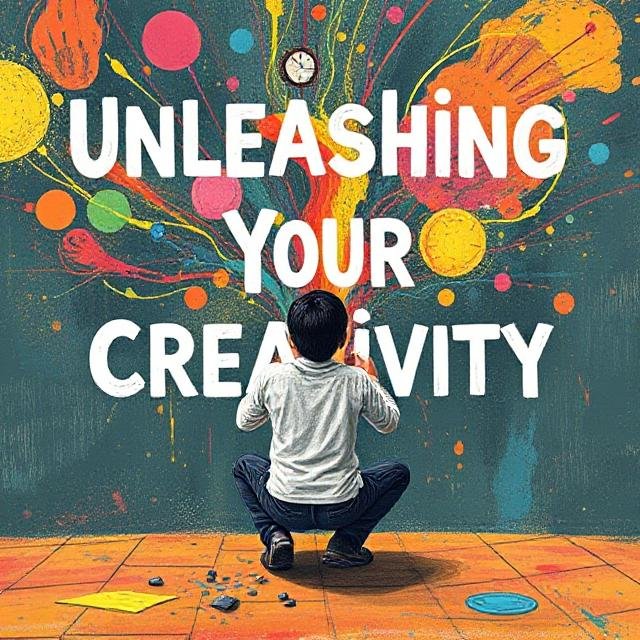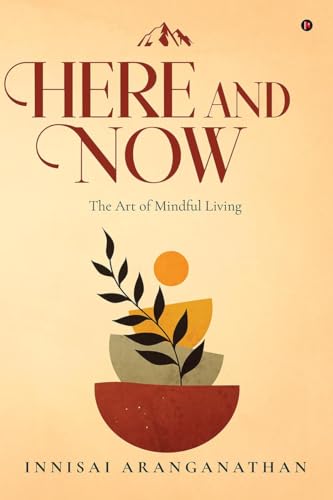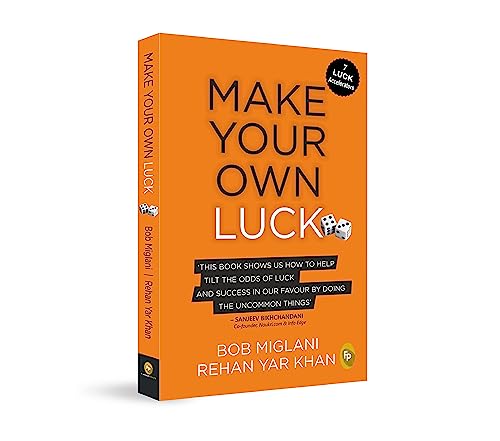Understanding Creativity
Creativity is a multifaceted concept that encompasses the ability to generate new ideas, approaches, or solutions. Defined broadly, it involves thinking outside conventional boundaries and applying diverse perspectives to various contexts. The pursuit of creativity can be seen in artistic expression, scientific discovery, business innovation, and even everyday problem-solving. At its core, creativity is not limited to a singular form; instead, it embodies a spectrum of expressions that often overlap and influence one another.
Several psychological and emotional factors play a pivotal role in fostering creative thinking. Traits such as curiosity, openness to experience, and resilience are often associated with creative individuals. These traits enable thinkers to explore unfamiliar territories and experiment with unorthodox ideas without the fear of failure. Furthermore, emotional states significantly influence creativity. For instance, individuals often report heightened creative output during moments of joy or inspiration, while stress or anxiety can impede imaginative thinking. The relationship between emotion and creativity highlights the importance of a conducive environment that nurtures positive psychological conditions.
Creativity manifests in a wide array of contexts, each with its unique attributes. In the realm of art, it is expressed through visual, musical, and literary forms, enabling personal or societal narratives to be communicated effectively. In science, creativity is fundamental to hypothesizing and experimenting, driving innovation and discovery. The business sector also heavily relies on creative thinking to devise strategies and develop products that cater to consumer needs. Furthermore, creativity finds its way into daily life, where individuals apply innovative techniques to overcome challenges and improve their quality of life. Understanding the various dimensions of creativity is essential, as it underscores its significance in personal and societal growth.
The Science Behind Creativity
Creativity is a complex phenomenon that has intrigued scientists, psychologists, and artists alike for centuries. Recent advances in neuroscience have provided valuable insights into the brain’s inner workings during creative tasks. Research demonstrates that creativity involves a dynamic interplay between various regions of the brain, allowing for the generation of novel ideas and solutions. For instance, the default mode network, which is active during mind-wandering and daydreaming, plays a crucial role in idea generation, while the executive control network helps in evaluating and refining these ideas.
One significant aspect of creativity is the role of neuroplasticity—the brain’s ability to reorganize itself by forming new neural connections. Neuroplasticity allows individuals to enhance their creative skills through practice and experience. Engaging in diverse activities, such as learning a new instrument or exploring a different art form, can stimulate neuroplastic changes in the brain, leading to improved cognitive flexibility and creativity. Studies indicate that experiences rich in novelty can activate neurogenesis, which is the process of forming new neurons, thereby augmenting the brain’s creative capacity.
Moreover, both intrinsic and extrinsic factors contribute to the biology of creativity. Intrinsic motivation, or the drive to pursue an activity for its own sake, has been shown to enhance creative thought processes. When individuals are genuinely interested in what they are doing, their brain functions differently, facilitating greater creative output. On the other hand, extrinsic factors—such as rewards or social pressures—can have mixed effects on creativity. While certain incentives can boost motivation, excessive external pressures may hinder the free-flowing nature of creative thought.
In essence, the science behind creativity suggests that it is not a fixed trait but a malleable skill that can be cultivated through understanding the brain’s functions and structures. By recognizing the intricate relationship between brain activity, neuroplasticity, and motivational factors, individuals can unlock new pathways to enhance their own creativity.
Barriers to Creativity
Creativity is often perceived as a free-flowing expression of ideas and emotions, yet various barriers can impede this process. A significant obstacle faced by many is the fear of failure. This fear can create a mental block, causing individuals to hesitate in sharing their ideas or attempting new projects. Instead of embracing the possibility of innovation, they may retreat into a comfort zone, where creativity remains untapped. Overcoming this barrier requires a shift in mindset, recognizing that failure is often a stepping stone to success.
Societal expectations also play a pivotal role in stifling creativity. Many individuals conform to norms or standards imposed by their surroundings, which can hinder their ability to think outside the box. These expectations may manifest as pressures to achieve specific outcomes or to adhere to traditional methods, leaving little room for experimentation. To tackle this issue, fostering an environment that values creativity over conformity is essential. Encouraging dialogue and collaboration can help dismantle these societal constraints, allowing for richer creative expression.
Mental blocks, often exacerbated by stress, perfectionism, and self-doubt, further obstruct the creative process. Stress can cloud judgment and diminish motivation, making it difficult to engage in creative tasks. Perfectionism creates an unrealistic standard, leading individuals to become paralyzed by their own high expectations. Overcoming mental blocks involves incorporating practices that promote mental well-being, such as mindfulness and relaxation techniques. Additionally, challenging negative self-talk and promoting self-compassion can empower individuals to embrace their creative journey without the fear of imperfection.
By recognizing and addressing these barriers to creativity, individuals can enhance their creative expression and unlock their full potential. Understanding how fear of failure, societal expectations, and mental blocks affect the creative process is the first step in overcoming these challenges.
Cultivating a Creative Mindset
Developing a creative mindset is an essential aspect of unlocking your creative potential. At the core of this mindset lies a deep sense of curiosity. Being curious about the world around you encourages exploration and experimentation, two critical components in the creative process. By maintaining an inquisitive outlook, you can approach problems from different angles and unearth novel solutions that may not have been immediately apparent.
Another vital aspect of fostering creativity is the willingness to experiment. This often involves stepping out of your comfort zone and trying new methods or ideas. This could be as simple as changing your usual routine or engaging in a new hobby. Experimentation is not solely about success; rather, it is about learning from failures and adjusting your approach. By viewing setbacks as opportunities for growth, you can build resilience—a trait that is invaluable in the creative journey.
Incorporating journaling into your daily routine can significantly enhance your creative mindset. This practice offers a dedicated space to think freely, capture fleeting ideas, and reflect on your experiences. You can explore your thoughts and feelings, which may reveal new perspectives and inspire fresh concepts. Brainstorming sessions, either alone or with others, can also fuel your creativity. During these sessions, allow ideas to flow without judgment, fostering an environment where innovation thrives.
Lastly, engaging in diverse experiences broadens your horizons and provides unique insights that can spark creativity. This could include attending workshops, networking with individuals from different fields, or immersing yourself in various cultures. Each of these experiences adds to your creative toolkit, equipping you with varied references and styles that inform your art or endeavors.
By embracing curiosity, adopting an experimental approach, journaling regularly, brainstorming creatively, and seeking diverse experiences, you create a fertile environment for your creativity to flourish.
The Role of Environment in Creativity
Creativity is often regarded as an individual trait; however, the environments in which individuals operate play a significant role in shaping and nurturing creative capacities. The impact of physical spaces on creativity cannot be overstated. For instance, cluttered and disorganized workspaces can stifle innovation and inhibit the free flow of ideas. In contrast, well-organized, aesthetically pleasing environments can imbue individuals with a sense of motivation and inspiration. Natural light, vibrant colors, and comfortable furniture can create an atmosphere conducive to creative thinking.
Moreover, the significance of natural settings should not be underestimated. Research has consistently shown that exposure to nature can enhance cognitive functions and stimulate creative problem-solving. Outdoor environments, with their abundance of sensory experiences, can provide a reprieve from mundane routines, thereby fostering divergent thinking. It is essential to incorporate elements such as greenery, water features, or even art installations, which can stimulate the senses and cultivate an environment that promotes creativity.
In addition to physical surroundings, social environments are also critical in influencing creativity. Collaborative teams or creative circles often yield richer ideas than solitary efforts. The exchange of diverse perspectives and constructive feedback fosters a sense of community that can amplify creative processes. An open culture that encourages experimentation and risk-taking is vital for creativity to flourish in social settings. Therefore, it is important to cultivate environments where individuals feel safe to express unconventional ideas without fear of critique.
To enhance creativity within your environment, consider rearranging your workspace for better organization, incorporating elements of nature, or engaging with others in creative discussions. By carefully curating your environments—both physical and social—you can create spaces that not only inspire but also nurture the growth of creative thoughts and ideas.
Creative Techniques and Exercises
Stimulating creative thinking can be achieved through a variety of techniques and exercises. These methods not only encourage innovative thought but also help to break away from conventional thinking patterns. One effective technique is mind mapping, which involves visually organizing information around a central concept. By drawing branches that represent related ideas or concepts, individuals can explore connections and develop a deeper understanding of their thoughts. For example, a writer may start with the theme of “nature” and create branches for various elements like flora, fauna, weather, and landscapes, allowing for a broader exploration of topics.
Another valuable technique is lateral thinking, a term coined by Edward de Bono. This method encourages thinking outside the traditional constraints and suggests considering unconventional approaches to problem-solving. One common exercise in lateral thinking is the “Six Thinking Hats” method, where participants adopt different perspectives—rational, emotional, creative, etc.—to analyze a single problem. By moving through these perspectives, groups can generate a multitude of ideas that may not surface through conventional brainstorming.
SCAMPER is another creative exercise that stands for Substitute, Combine, Adapt, Modify, Put to another use, Eliminate, and Reverse. This acronym serves as a guide for questioning existing products or ideas, thus prompting innovative thinking. For instance, a team working on a new product might ask how they could adapt an existing item to better meet consumer needs, leading to enhancements and novel solutions.
Furthermore, brainstorming sessions are classic yet effective ways to foster creativity. By encouraging free-flowing ideas, participants can build on one another’s thoughts without immediate critique. This approach can be particularly fruitful in group settings where diverse perspectives come together to solve a common challenge.
Each of these techniques—mind mapping, lateral thinking, SCAMPER, and brainstorming—offers unique advantages for enhancing creativity. By implementing these methods, individuals and teams can unlock new avenues for innovative thinking and problem-solving.
Embracing Failure as Part of the Creative Process
Failure is often viewed as a negative outcome, especially in creative endeavors. However, many successful innovators and creators recognize failure as an integral component of the creative process. When embarking on a creative journey, it is vital to understand that failure is not an endpoint, but rather a stepping stone leading to growth and eventual success. By reframing our perspective on failure, we can cultivate a mindset that encourages experimentation and risk-taking.
The relationship between failure and creativity can be seen in the stories of numerous prominent figures in the arts, sciences, and business. For instance, Thomas Edison famously stated, “I have not failed. I’ve just found 10,000 ways that won’t work.” This perspective underscores the importance of persistence and resilience in the face of setbacks. Instead of viewing failures as obstacles, successful individuals consider them opportunities for learning and improvement.
To embrace failure as part of the creative process, artists and innovators can adopt several strategies. Firstly, setting realistic expectations can help mitigate the fear of failure. Understanding that mistakes are a common and necessary part of the learning process creates a more forgiving environment for experimentation. Secondly, fostering a supportive community can enable individuals to openly share their failures without judgment. Such an environment encourages collaboration and collective problem-solving, often leading to innovative breakthroughs.
Additionally, reflecting on failures can provide valuable insights. By analyzing what went wrong and identifying the lessons learned, creators can refine their approaches and make informed decisions in future endeavors. This practice not only builds resilience but also enhances overall creativity by allowing for continued exploration and evolution of ideas. In conclusion, embracing failure as a necessary aspect of the creative process opens the door to greater innovation and artistic freedom, ultimately leading to success.
The Impact of Collaboration on Creativity
Collaboration plays a significant role in enhancing creativity across various domains. When individuals come together with different skill sets, backgrounds, and perspectives, they form a multifaceted approach to problem-solving that fosters innovation. The benefits of these diverse viewpoints cannot be overstated; they contribute unique ideas that may not have emerged in isolated settings. This richness in perspectives often leads to creative solutions that are both novel and effective.
Teamwork creates a synergy that amplifies the creative process. When collaborating, team members engage in discussions that challenge assumptions and provoke new thoughts. This interaction often results in what’s termed as the “2 + 2 = 5” phenomenon, where the combined output of a group exceeds what individuals could achieve independently. Collaborative environments encourage risk-taking, as individuals feel more comfortable sharing unconventional ideas when they are supported by team members.
Effective collaborative brainstorming techniques can significantly enhance the creative output of a team. Approaches such as mind mapping, where ideas radiate from a central concept, allow participants to visualize connections and possibilities. The “Six Thinking Hats” method prompts individuals to explore a problem from multiple perspectives—rational, emotional, creative, and more—encouraging deeper engagement and diverse thinking. Additionally, conducting workshops or hackathons can break down hierarchies, fostering open communication and empowering all participants to contribute, thereby enriching the collaboration process.
Real-life examples further illustrate the impact of collaborative creativity. In the tech industry, innovations like the smartphone emerged from teamwork among engineers, designers, and marketers. Similarly, in the arts, film productions rely heavily on collaboration among directors, writers, and actors to breathe life into a script. These instances highlight the transformative potential of collaboration, as diverse groups continue to produce groundbreaking ideas that shape our world.
Incorporating Creativity into Daily Life
Integrating creativity into daily life can significantly enhance overall well-being and inspire a more fulfilling existence. One effective approach to fostering creativity is to engage in creative hobbies. Activities such as painting, writing, or playing a musical instrument can allow individuals to express themselves and explore new ideas. Setting aside specific times during the week for these pursuits can establish a routine that nurtures creative energy and promotes relaxation.
Another way to spark inspiration is through exploration and new experiences. This can include visiting art galleries, attending workshops, or even hiking in nature. Such experiences provide fresh perspectives and can lead to new creative ideas. Additionally, traveling—whether to a new town or a different country—can expose individuals to diverse cultures and creative practices, which can be invaluable in enriching one’s imagination.
In professional settings, incorporating creativity can result in enhanced innovation and productivity. Encouraging a collaborative atmosphere where team members freely share their ideas can foster a culture of creativity. Implementing regular brainstorming sessions, where no idea is too far-fetched, can lead to groundbreaking solutions. Furthermore, creating a visually stimulating workspace with artwork or inspiring quotes can also play a significant role in enhancing creativity within professional environments.
Lastly, maintaining a creative journal can serve as an excellent tool for cultivating ongoing creativity. This practice encourages daily reflection and the documentation of ideas, goals, and inspirations. Regularly revisiting this journal can remind individuals of their creative journey and the progress they have made. By integrating these practices into everyday life, individuals can effectively harness their creative potential, thereby enriching both their personal and professional experiences.





